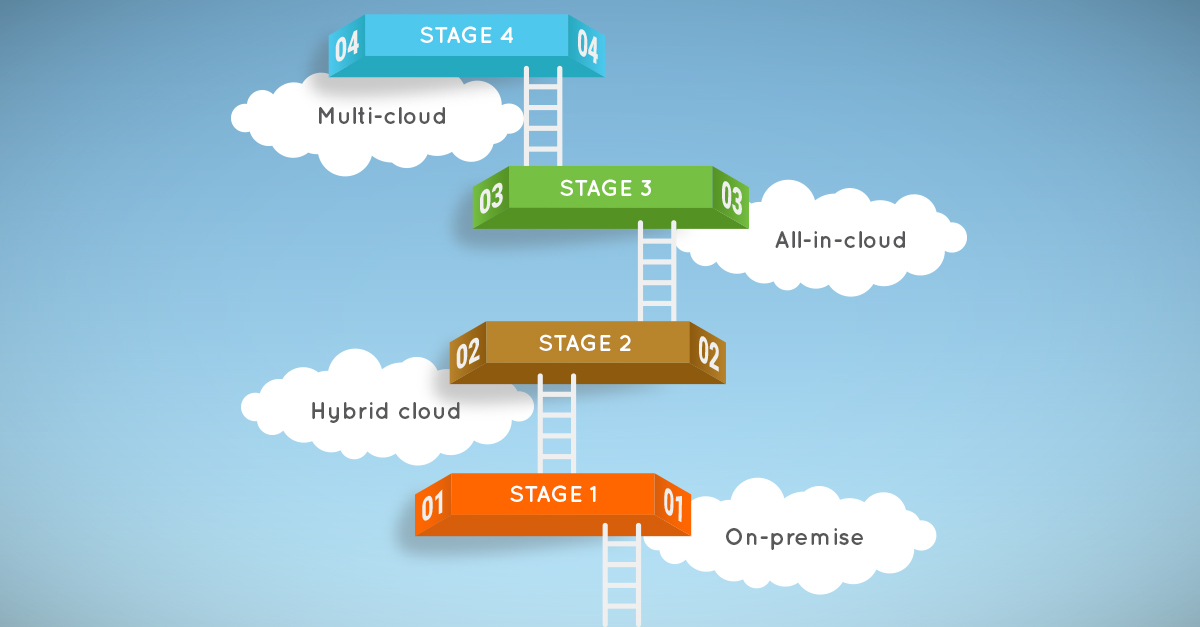The evolution of IT infrastructure has led to a paradigm shift in the way organizations manage and deploy their resources. Hybrid cloud adoption, a strategic blend of on-premises infrastructure and cloud services, has emerged as a powerful solution for businesses seeking flexibility, scalability, and a balance between traditional and modern computing environments. In this exploration, we delve into the intricacies of hybrid cloud adoption, examining the integration of on-premises and cloud migration strategies.
1. Defining Hybrid Cloud Adoption:
Hybrid cloud adoption involves the simultaneous use of on-premises infrastructure and cloud services to meet an organization’s computing needs. This model allows businesses to leverage the benefits of both environments, combining the control and security of on-premises solutions with the agility and scalability of the cloud. The integration of on-premises and cloud migration strategies forms the foundation of a well-orchestrated hybrid cloud architecture.
2. Seamless Cloud Migration Strategies:
Successful hybrid cloud adoption begins with effective cloud migration strategies. Businesses must assess their existing on-premises infrastructure, identifying workloads and applications suitable for migration to the cloud. Cloud migration services play a crucial role in ensuring a seamless transition, involving careful planning, data migration, and testing to optimize performance in the hybrid environment.
3. Optimal Resource Utilization:
Hybrid cloud adoption enables optimal resource utilization by allowing organizations to allocate workloads to the most appropriate environment. Critical and sensitive workloads can remain on-premises, providing control and compliance, while less sensitive and more scalable workloads can leverage the cloud. This dynamic allocation ensures efficient resource usage based on the specific needs of each workload.
4. Scalability and Flexibility:
One of the key advantages of hybrid cloud adoption is the inherent scalability and flexibility it offers. Businesses can scale their infrastructure horizontally by utilizing cloud resources during peak demand periods, ensuring that performance remains consistent. The flexibility to adapt to changing workloads enhances agility and responsiveness, a crucial aspect of modern IT operations.
5. Data Governance and Compliance:
Integrating on-premises and cloud migration strategies requires a meticulous approach to data governance and compliance. Organizations must adhere to regulatory requirements governing data storage, processing, and transfer. Hybrid cloud solutions provide the flexibility to store sensitive data on-premises while utilizing cloud services for non-sensitive data, striking a balance between compliance and operational efficiency.
6. Hybrid Cloud Management Platforms:
To streamline the integration of on-premises and cloud environments, businesses often leverage hybrid cloud management platforms. These platforms provide a unified interface for managing resources across diverse environments. IT teams can monitor performance, allocate resources, and implement consistent security policies, simplifying the complexities of hybrid infrastructure.
7. Security Measures and Identity Management:
Security is a paramount concern in hybrid cloud adoption. Organizations must implement robust security measures, including encryption, access controls, and identity management. Unified identity and access management (IAM) strategies ensure consistent authentication and authorization across on-premises and cloud resources, reducing the risk of unauthorized access.
8. Disaster Recovery and Business Continuity:
Hybrid cloud architectures enhance disaster recovery and business continuity strategies. Critical applications can have redundant setups across on-premises and cloud environments, minimizing the impact of potential outages. Cloud-based disaster recovery solutions provide efficient backup and recovery mechanisms, ensuring data resilience and availability.
9. Cost Optimization:
Hybrid cloud adoption offers cost optimization benefits by allowing organizations to align their infrastructure expenses with their specific needs. Businesses can leverage the cost advantages of cloud services for variable workloads, while maintaining control over fixed costs associated with on-premises infrastructure. This hybrid approach optimizes expenses without compromising performance.
10. Collaboration and Communication:
Integration between on-premises and cloud environments facilitates seamless collaboration and communication. Hybrid cloud solutions enable the efficient sharing of data and resources across distributed teams, fostering collaboration irrespective of geographical locations. This interconnectedness supports modern work practices, including remote work and collaborative project management.
11. Evolving IT Skillsets:
The integration of on-premises and cloud migration strategies requires IT teams to evolve their skillsets. Cloud-native technologies and tools become integral to daily operations, necessitating proficiency in areas such as cloud architecture, automation, and orchestration. Organizations invest in training and upskilling initiatives to empower their IT teams to navigate the complexities of hybrid cloud environments.
12. Continuous Optimization and Innovation:
Hybrid cloud adoption is a journey that involves continuous optimization and innovation. Organizations must regularly assess their hybrid infrastructure, identifying opportunities for improvement and innovation. Adopting emerging technologies and staying informed about industry best practices ensures that the hybrid environment remains efficient, secure, and aligned with evolving business goals.
Conclusion:
Hybrid cloud adoption represents a strategic approach to IT infrastructure, combining the strengths of on-premises solutions and cloud services. The integration of on-premises and cloud migration strategies empowers organizations to achieve a harmonious balance between control, scalability, and innovation. As businesses navigate the dynamic landscape of modern IT, hybrid cloud adoption emerges as a resilient and forward-looking solution.





